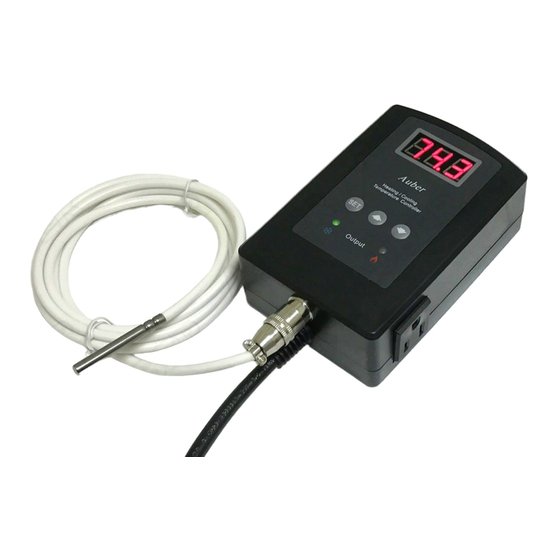Auber Instruments TD120-W Instruction Manual - Page 3
Browse online or download pdf Instruction Manual for Temperature Controller Auber Instruments TD120-W. Auber Instruments TD120-W 4 pages. Wireless temperature controller
Also for Auber Instruments TD120-W: Supplementary Manual (2 pages)

AUBER INSTRUMENTS
contact remains open (after reaching cutout) before closing again. The
delay overrides any Load Demand and does not allow the NO contacts
to close until the set time-delay value has elapsed. It gives time to
release the refrigerant pressure through evaporator. It is typically set to
4 ~ 6 minutes.
Note 4. The SFA defines how the output would be if the sensor fails. It
can be set to 0-0, 0-1 or 1-0. Please refer to table 2 for details.
Table 2. Output of the controller when sensor fails:
SFA
Controller output when sensor fails
0-0
1-0
0-1
For example, when the unit controls a refrigerator for food, you may
want to set the SFA to ON if the sensor fails to keep the food cold.
When it controls a heater, you may want to set the output to OFF for
safety purpose.
Note 5. The offset is used to set an input offset to compensate the
error produced by the sensor or input signal itself.
For example, for temperature, if the unit displays 37ºF when the actual
temperature is 32ºF, setting parameter oFS = -5 will make the
controller display 32ºF.
Note 6. C-F determines the temperature unit. It can be set to C
(Celsius, ˚C) or F (Fahrenheit, ˚F).
Note 7. LGC Control Logic (advanced feature). This parameter is used
to change the current control logic mode. Three modes are available:
• NOR -- normal control logic (default)
• R-C -- reverse logic, output send to Cooling socket (left)
• R-H -- reverse logic, output send to Heating socket (right)
If set to default mode (NOR), when this controller is calling for heat, the
heating output socket on the right will be triggered. When this controller
is calling for cool, the cooling output socket on the left will be triggered.
If set to reverse modes (R-C/R-H), when this controller is calling for
heat or cool, the output is disabled. In other conditions, the output will
be triggered. You can assign this output to cooling socket (R-C), or
heating socket (R-H). For details, see flow chart below.
2019.08
cooler off, heater off
cooler on, heater off
cooler off, heater on
Figure 4. Reverse mode flow chart.
Explanation:
1. The plot on the top shows how the room temperature changes as
time goes by. The diagram on the bottom shows the status of the
output relay as temperature move across each set point.
WWW.AUBERINS.COM
P3/4
